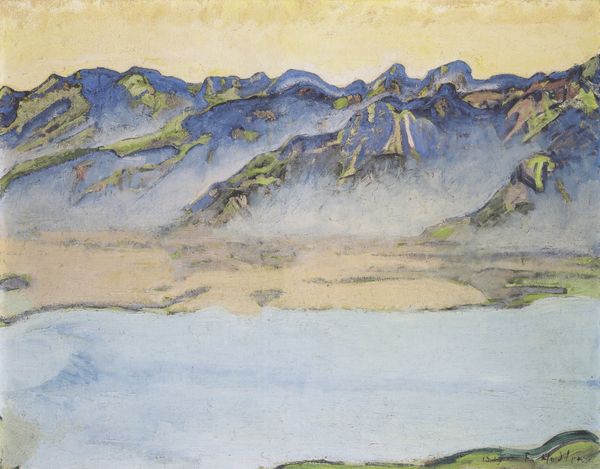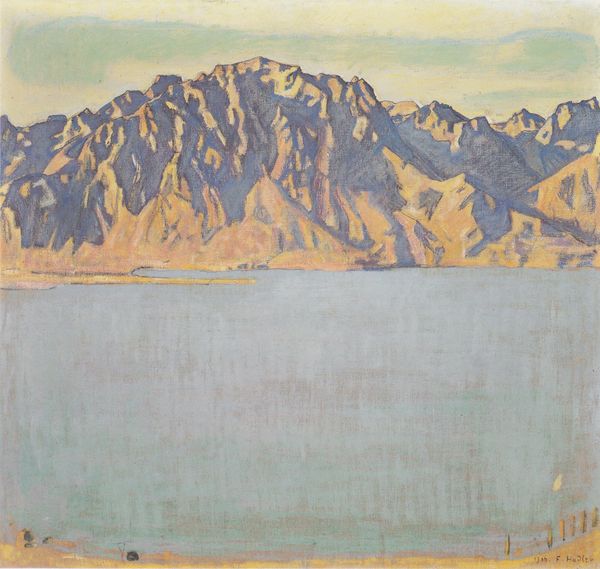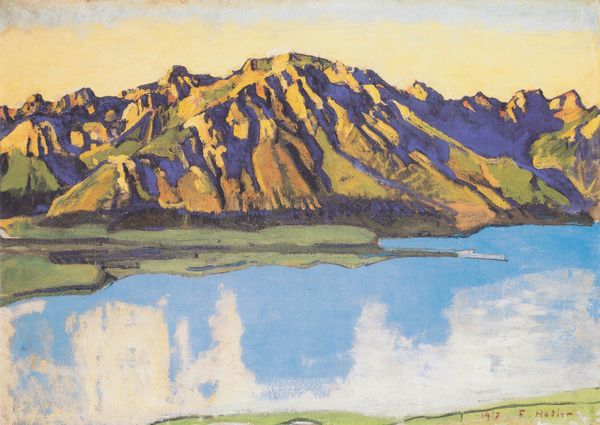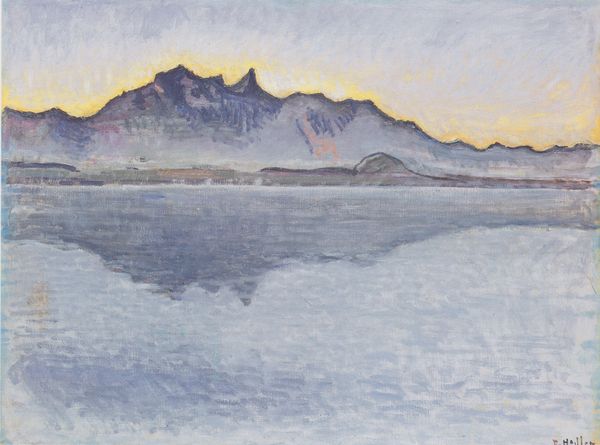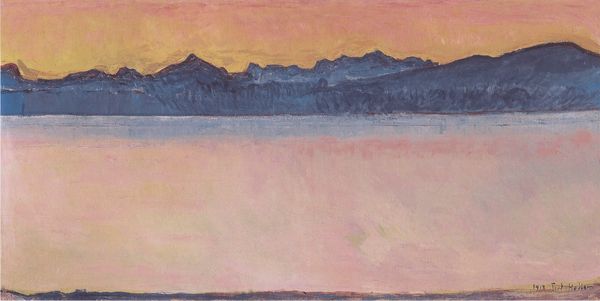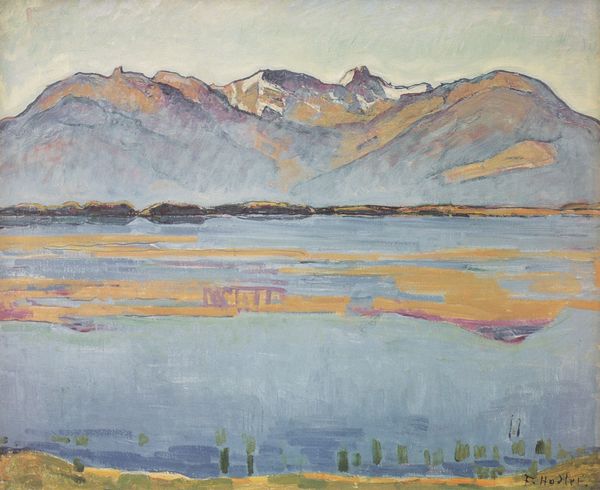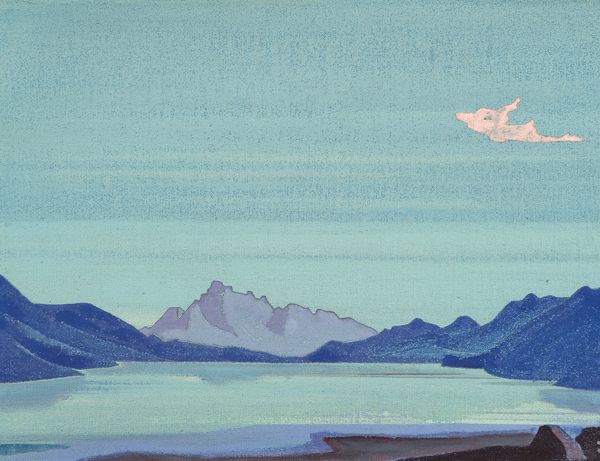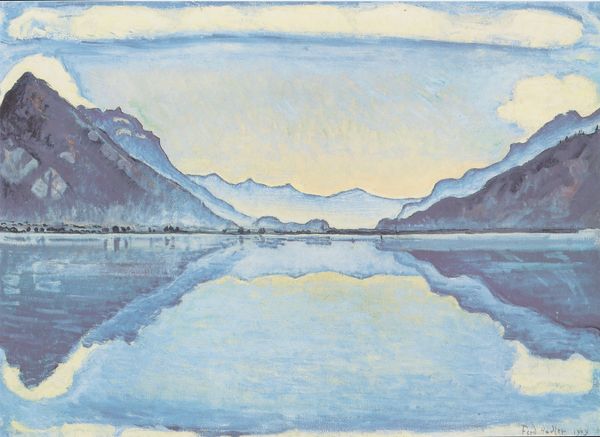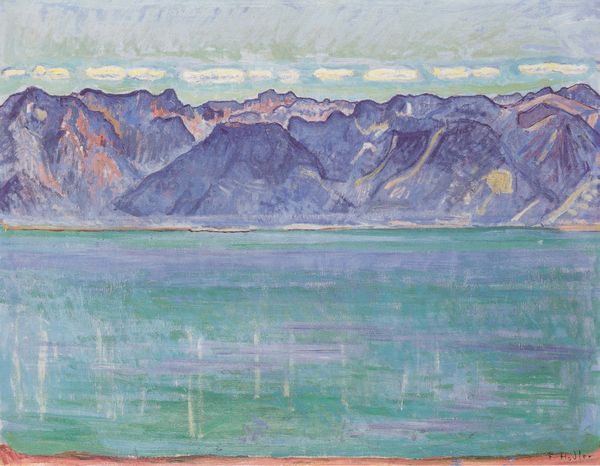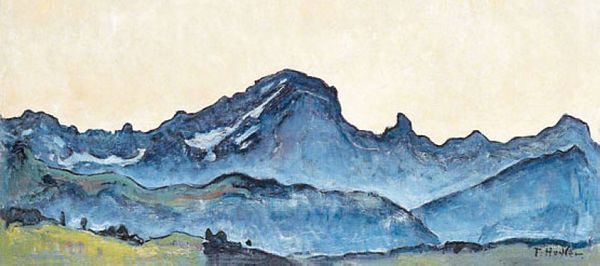
Dimensions: 65.5 x 88 cm
Copyright: Public domain
Curator: This is Ferdinand Hodler's "Thun, Stockhornkette," painted around 1910. Look closely at how the lake, landscape, and mountain range stack, creating a unique rhythm of shape. Editor: It has a sort of stillness. An uncanny calmness radiating from this composition despite its slightly crude use of, what seems to be, oil paints. The stark horizontal planes draw the eye across, yet hold you captive in their grasp. Curator: Yes, it’s interesting to consider the landscape tradition and Hodler's place within it. His landscapes often explored themes of national identity in Switzerland at the turn of the century. They engaged the social and political importance of landscape at a time when it played a crucial role in Swiss identity. Editor: This image gives me pause, what was the function of these muted colors at this time? Perhaps something to do with a feeling of economic tension and changing times? I think about the materials he used and what was at his disposal at the time: were these pigments cheap or hard to access? I ponder what the canvas was made from as I gaze upon the pale tones, what was the artist wanting the consumer to connect with when creating these images. Curator: That is indeed relevant, because Hodler’s methodical, repetitive brushstrokes evoke a deliberate process of working, calling attention to the labor of art making itself. Hodler uses a very restricted palette. This resonates, I think, with his socialist leanings. The simplification pushes the painting closer to abstraction, further questioning traditional notions of value and production. Editor: Absolutely. Thinking about the relationship of landscape to the economy helps explain it; to see landscape not as just something pretty but an idea which connects labor and resources. What does the landscape *do*? It’s fascinating to think about how material limitations could've actually fueled some truly radical aesthetic choices. Curator: Considering all the work we've looked at today, the intersection of visual art with its socio-political contexts feels especially urgent in Hodler's piece. We get an insight into Switzerland's positioning within Europe, from this perspective, but also the individual and the country as a wider framework of identity. Editor: Looking at the piece now and reflecting upon it; these new considerations open new pathways and ideas I wouldn't have normally thought of.
Comments
No comments
Be the first to comment and join the conversation on the ultimate creative platform.
